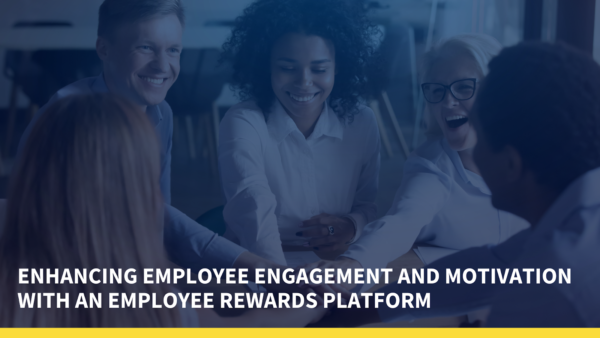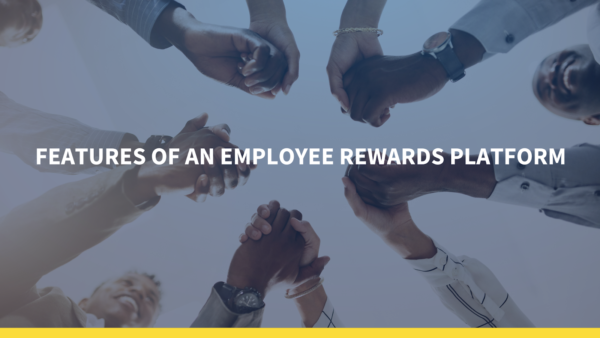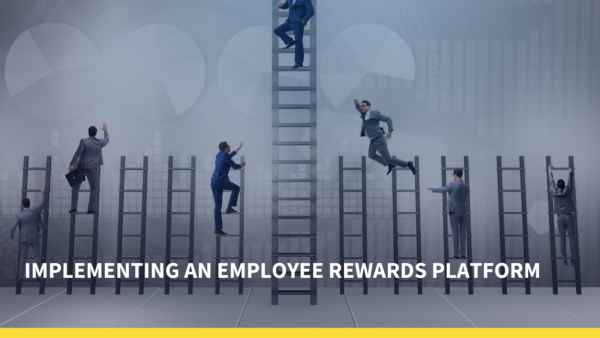Enhancing Employee Engagement with an Employee Rewards Platform
Organizations continuously seek methods to improve employee engagement and motivation in today’s cutthroat business environment. They know that a motivated team boosts productivity and adds to the business’s overall success. Implementing an employee rewards platform is one practical alternative that is gaining favor. With the help of this complete tool, employee accomplishments may be recognized and rewarded in a disciplined manner, promoting a pleasant workplace culture and improving performance.

What is an Employee Rewards Platform?
A technology-driven system called an employee rewards platform is intended to improve and expedite the process of recognizing and rewarding employee success. It provides a centralized location for managing and executing different reward schemes, incentive schemes, and recognition programs. To support the success of the programs, these platforms frequently contain features like employee recognition tools, rewards catalogs, performance monitoring, and data analytics.
Benefits of an Employee Rewards Platform
Boosts Employee Motivation:
Employee pride and motivation are increased when their efforts are recognized and appreciated. A platform for employee awards makes it simple to recognize exceptional achievement, increasing morale and inspiring workers to go above and beyond.
Enhances Employee Engagement:
Employees engaged at work are more likely to be effective, content, and dedicated to their jobs. It encourages participation by providing a variety of rewards and recognition choices, which raises engagement and helps employees feel more connected to the business.
Improves Retention Rates:
Insufficient incentives and recognition might cause disengagement and greater turnover rates. By implementing a rewards platform, businesses foster a supportive workplace environment that values and recognizes employee contributions. As a result, retention rates increase as workers feel appreciated and are less likely to look for employment elsewhere.
Drives Healthy Competition:
A platform for employee awards can encourage constructive competition inside the company. It inspires others to strive for excellence by praising and rewarding top performers, which boosts general performance and productivity.
Facilitates Data-Driven Decision Making:
Platforms for employee rewards frequently feature analytics and reporting capabilities that provide useful insights into employee engagement and performance. With this information, businesses are better equipped to manage their rewards programs, see trends and potential areas for development, and recognize workers who go above and beyond.
Features of an Employee Rewards Platform

Customizable Reward Programs:
It enables businesses to customize their reward strategies to fit their corporate cultures and goals. The platform allows customization to meet the workforce’s preferences, whether monetary incentives, gift cards, or experiential benefits.
Social Recognition Tools:
These tools enable staff members to publicly recognize and applaud the accomplishments of their colleagues, promoting a culture of appreciation and cooperation. Social recognition tools provide a welcoming and inclusive workplace where people feel valued by their coworkers.
Rewards Catalog:
In order to give employees a variety of possibilities, an rewards platform often offers a wide selection of awards. This might be in the form of goods, excursions, chances for professional growth, or even charity contributions. The range of incentives allows for optimal effect while accommodating various motivational factors and preferences.
Performance Tracking and Gamification:
Managers and staff can measure progress toward goals and targets in real-time thanks to performance monitoring capabilities. Leaderboards and badges are examples of gamification components that offer a fun and friendly competitive aspect, increasing motivation and engagement.
Data Analytics and Reporting:
Analytics and reporting functions offer useful information and insights. To continuously increase the success of their incentive programs, businesses may track engagement levels, recognize top performers, and assess the effectiveness of their programs.
Implementing an Employee Rewards Platform

Define Objectives and Metrics:
Organizations must identify their goals and the criteria they will use to gauge performance before establishing an employee rewards platform. This guarantees that the platform aligns with the business objectives and enables useful assessment.
Select the Right Platform:
Look at the many platforms on the market and compare their features, usability, integration potential, and customer service. Select a platform that can scale up or down to accommodate your organization’s changing demands.
Communicate and Train:
Through good communication with your workers, introduce them to the employee incentive platform. To make sure that staff members can use the platform and benefit from all of its capabilities, offer training sessions or tutorials.
Launch and Promote:
Launch the platform with a well-designed communication campaign highlighting the benefits, features, and rewards. Encourage employees to actively participate and promote the platform’s usage through regular reminders and updates.
Evaluate and Adapt:
Continuously evaluate the effectiveness of the incentive program through data analytics and employee feedback. Make adjustments as necessary to optimize engagement and impact, ensuring the platform remains relevant and valuable.
Conclusion
An employee rewards platform offers a comprehensive solution to enhance employee engagement and motivation within organizations. By recognizing and rewarding employee achievements, organizations can create a positive work environment that drives productivity, fosters healthy competition, and improves overall performance. With customizable reward programs, social recognition tools, and data analytics capabilities, these platforms empower organizations to create a culture of appreciation and continuous improvement. By implementing an rewards platform, organizations can unlock the potential of their workforce and achieve lasting success.
Frequently Asked Questions (FAQs) about Employee Rewards Platforms:
What is an employee rewards platform?
An employee rewards platform is a technology-driven system that helps organizations manage and administer various reward programs, incentives, and recognition initiatives. It provides a centralized hub to recognize and reward employee achievements, fostering a positive work environment and driving better results.
How does an employee rewards platform boost employee engagement?
An employee rewards platform boosts employee engagement by acknowledging and rewarding their hard work and accomplishments. It creates a culture of recognition and appreciation, motivating employees to excel and actively participate in the organization’s success.
Can an employee rewards platform improve retention rates?
Yes, implementing an employee rewards platform can improve retention rates. By creating a positive work culture that values and appreciates employees, the platform helps foster loyalty and reduces the likelihood of employees seeking opportunities elsewhere.
What types of rewards can be offered through an employee rewards platform?
An employee rewards platform offers a wide range of rewards, including monetary incentives, gift cards, merchandise, travel experiences, professional development opportunities, and charitable donations. The platform allows organizations to customize the reward options to suit their employees’ preferences.
How does an employee rewards platform facilitate data-driven decision-making?
An employee rewards platform provides analytics and reporting features that offer valuable insights into employee performance and engagement. Organizations can analyze data to measure the effectiveness of their reward programs, identify trends, and make data-driven decisions to improve the programs’ impact continually.
Can an employee rewards platform promote healthy competition among employees?
Yes, an employee rewards platform can introduce healthy competition within the organization. Recognizing and rewarding top performers, it encourages others to strive for excellence, leading to improved overall performance and productivity.
Can we customize the employee rewards platform to align with our company culture?
Yes, most employee rewards platforms allow for customization to align with the unique company culture and objectives. You can tailor the reward programs, communication materials, and platform interface to reflect your organization’s values and branding.
How can we ensure the successful implementation of an employee rewards platform?
To ensure successful implementation of an employee rewards platform, it is important to define clear objectives, select the right platform that meets your organization’s needs, communicate effectively, provide training and support, and continuously evaluate and adapt based on feedback and data.
Are employee rewards platforms suitable for organizations of all sizes?
Yes, employee rewards platforms are suitable for organizations of all sizes. Whether you are a small startup or a large enterprise, implementing an employee rewards platform can significantly enhance employee engagement and motivation.
Can an employee rewards platform integrate with other HR systems?
Many employee rewards platforms offer integration capabilities with other HR systems such as performance management, payroll, and employee recognition tools. This allows for seamless data flow and streamlined processes across different HR functions.
